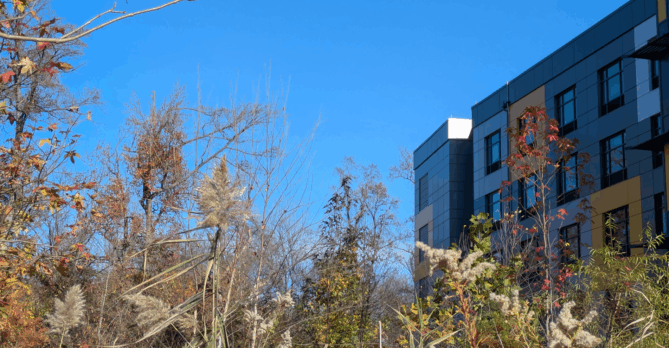Testimony of Dr. Jessica Sanders
Director of Science and Policy
Casey Trees
February 14, 2019
Performance & Oversight Hearing for the Department of Energy and the Environment
Committee on Transportation and the Environment
Good afternoon Chairwoman Cheh and councilmembers. My name is Dr. Jessica Sanders and I am the Director of Science and Policy at Casey Trees. Thank you for the opportunity to testify in front of you today.
Casey Trees is focused on restoring, enhancing and protecting the tree canopy of the nation’s capital. We are dedicated to helping the District meet its 40% tree canopy goal by 2032. Washington D.C. is a leader in environmental protection, sustainable development, and renewable energy and we believe that this benefit should be realized in all eight Wards and continue to support DOEE in providing a safe and healthy environment for all D.C. residents.
On a more personal basis, as a Ward 5 resident, I feel that trees provide more than an environmental value, they inspire a sense of place and belonging in my community.
However, without an adequate number of trees, these benefits could be lost. As impervious surfaces continue to increase throughout the city, we continue to experience a greater urban heat island effect. District summers are continuing to get hotter and residents should be entitled to live in the cool and comfortable environment that comes with a sufficient tree canopy.
Trees decrease air pollution, reduce stormwater runoff and energy usage, and increase property values. By increasing tree canopy, not only are more residents able to feel these benefits, but the District is able to get closer to meeting its tree canopy goal. We are experiencing this success with the introduction of Heritage Trees and the expanded definition of Special Trees (from 55 inches in circumference to between 44 and 99.9 inches). We commend the D.C. Council for their passage of the Tree Canopy Protection Amendment Act of 2016. Unfortunately, current policy still allows residents to remove Special Trees. This not only removes the benefits these trees have to the District, but also reduces the number of potential new Heritage Trees. We propose creating a credit or monetary savings program1 for developers who will work to protect Special Trees. There are already programs that incentivize planting trees, however, we urge this Council to take it one step further. Creating this type of program would not only provide long term economic, social, and environmental benefits, which are estimated to be equivalent to millions of dollars per year2, but would also sends a strong message of support and value of our sustainable, resilient, and beautiful D.C.
In order to do this, we must make sure that DOEE and their programs are adequately supported. DOEE was able to support the planting of over 3,000 trees in Fiscal Year (FY) 2018. Casey Trees staff and volunteers applaud DOEE on this achievement and will continue to help DOEE integrate trees into their various environmental sustainability and resiliency programs3. However, DOEE needs to be more transparent when reviewing development projects in order to ensure that plans are being approved or denied based on appropriate and consistent metrics. It is also important that DOEE work more closely with the Zoning Commission and DDOT when reviewing development plans to ensure that they are in compliance with all District plans, policies, and regulations.
Washington DC is more than its federal core. Its over 700,000 residents make up one of the most vibrant and diverse community in the nation and its government continues to be a leader in natural resources, sustainable development, and renewable energy policies. We thank DOEE and the D.C. Council for their dedication to improving the quality of life for District residents and will continue to support DOEE in their mission and vision for the city.
Thank you again for the opportunity to testify and I welcome any questions.
1Possibly one similar to the Stormwater Retention Credit (SRC) Trading Program, which allows participants to earn revenue for projects that reduce harmful stormwater runoff by installing green infrastructure or by removing impervious surfaces
2According to the 2013 DOEE Urban Tree Canopy Plan, Washington DC trees remove 490 metric tons of air pollution per year, a benefit valued at $3.7 million dollars, store 474,000 metric tons of carbon each year, a benefit value of $10.8 million dollars per year, can add up to 18% to property values, can reduce house’s energy use by up to 25%, creates jobs, and more
3Including Sustainable D.C. and the Climate Ready Plan


